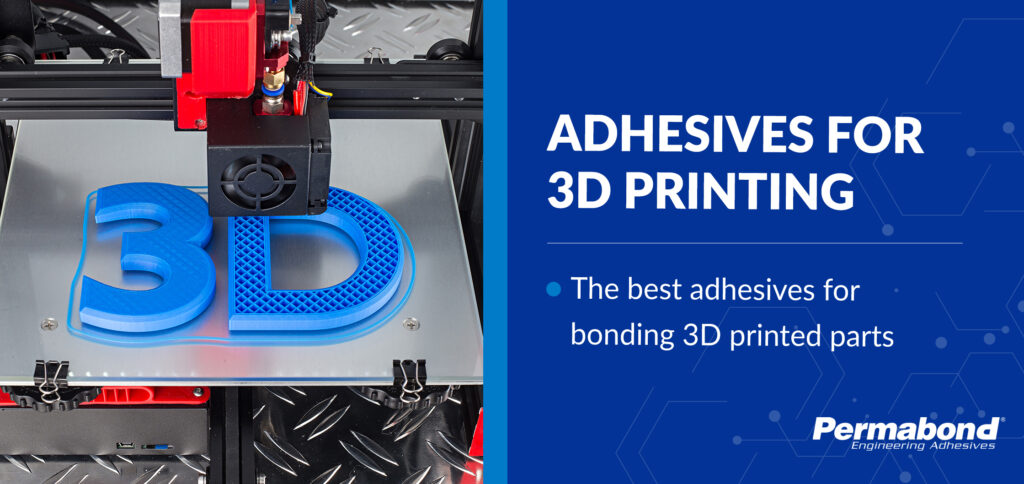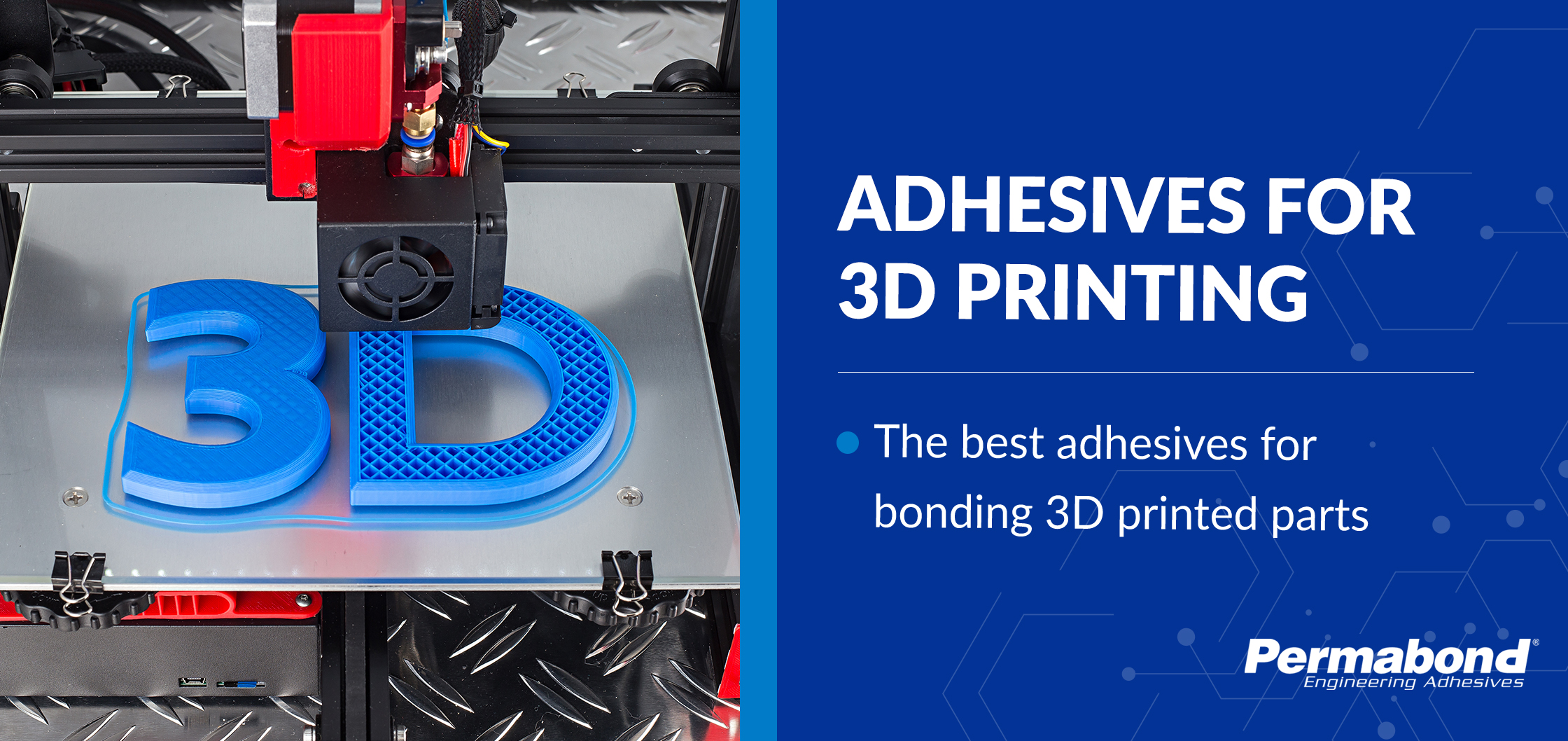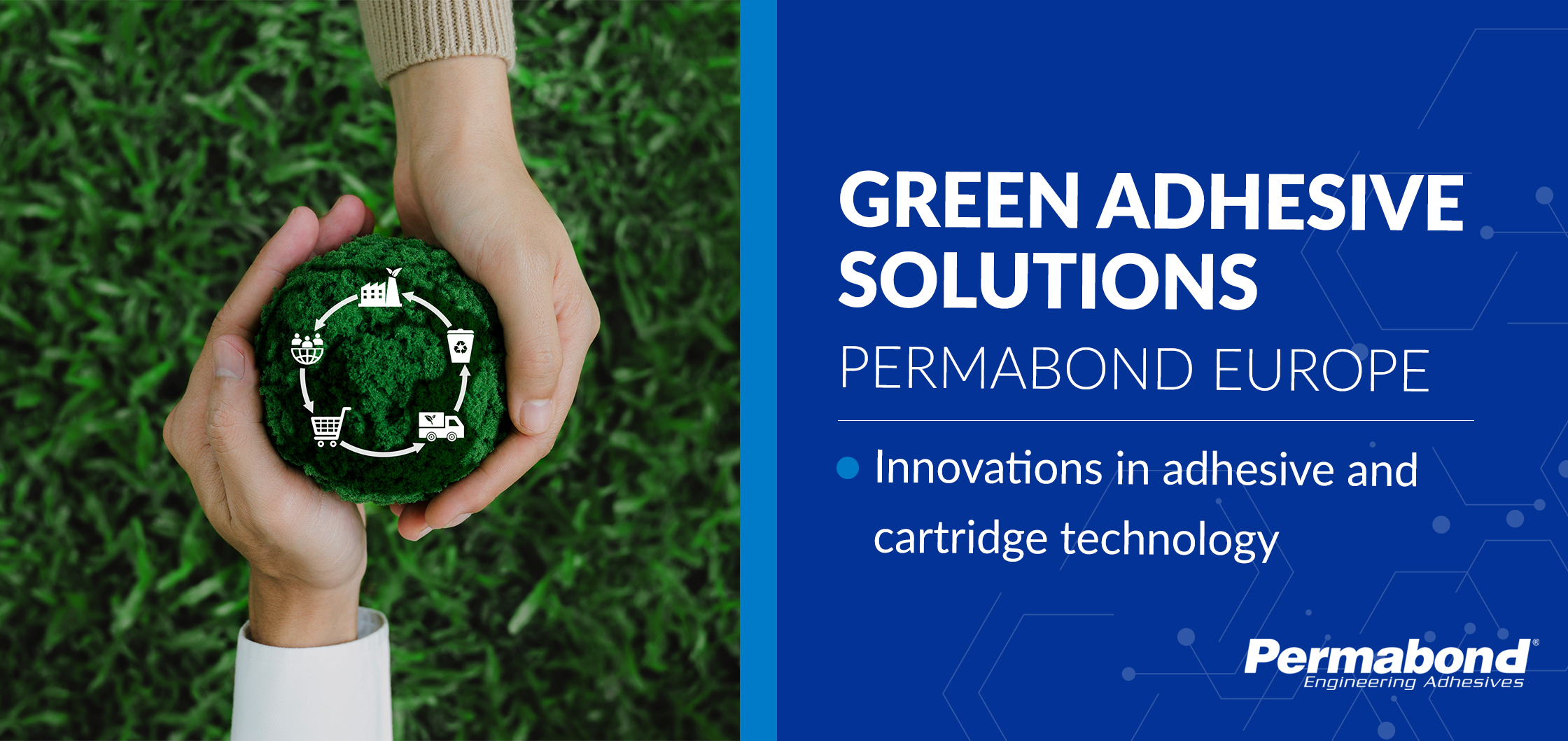The best adhesives for bonding 3D printed parts
3D printing, also known as additive manufacturing, is a process whereby a three-dimensional object is created from a CAD (computer-aided design) or digital 3D model. 3D printing is becoming increasingly common, in transition from being a somewhat niche technology to something much more mainstream.
Market data backs this up. The 3D printing market is projected to quadruple from US $20.3 billion in 2023 to $88.2 billion by 2030 with a compound annual growth rate (CAGR) of 23.5%. North America has the biggest share of the market at 33% in 2023, while the Asia-Pacific region is experiencing the fastest growth year on year.
Industries that use 3D printing
So, who’s driving this impressive growth? There are several key players in 3D printing who are turning to this production method for its precision and reliability:
- The aerospace and defense industry is one of the biggest buyers of 3D printed parts and assemblies, and it is likely to get even bigger. 3D printing is used for spare parts for aircraft, jigs and fixtures for parts assembly, weapon prototyping, drone components, and other applications.
- The automotive industry is another major user of 3D printing. Applications range from the manufacture of spare and custom parts (including low-volume parts for luxury cars) to prototyping and tooling aids.
- Another key player is the medical industry. Common applications here include implants (such as dental or cranial implants), prosthetics, and surgical instruments. The defense industry also makes great use of 3D printed medical devices.
Common materials used for 3D printing
Plastics are by far the most common materials used in 3D printing. However, other materials such as wood, metals, and even concrete can be used. Among plastics, polylactic acid (PLA), a thermoplastic polyester, is the most popular. This is because it can be printed at a low temperature, doesn’t require a heated plate bed, and it is cheap to produce. A key benefit of PLA is that it’s biodegradable and renewable, being sourced from crops such as corn and sugarcane.
ABS (Acrylonitrile butadiene styrene) is another popular substrate for 3D prints. This versatile, durable thermoplastic has a high impact resistance and stiffness, making it ideal for parts that need to withstand stress. Its high temperature resistance is another benefit, making it suitable for applications subjected to regular heating. ABS has been a popular material in 3D printing for a long time due to its ease of processing with traditional methods of manufacturing, such as intrusion and extrusion moulding.
Ease of printing, optical clarity and durability make PETG (Polyethylene Terephthalate Glycol) another popular plastic in 3D printing. PETG also has good water resistance and a smooth surface finish.
Nylon – a new player in the industry
Alongside the plastics mentioned above, nylon (also known as polyamide or PA for short) is becoming increasingly popular for 3D printing applications. Nylon is a very tough material which offers excellent strength and impact and abrasion resistance. It’s also highly flexible, and it’s this combination of flexibility, toughness and strength that can make it a better alternative to PLA and ABS in many applications. Nylon isn’t as stiff as some other plastics like ABS. Therefore, it is often reinforced with other materials such as carbon fibre for increased stiffness.
Some 3D printing applications that use nylon are as follows:
- Mechanical parts such as gears, bearings and hinges
- Consumer wearables like watch straps, glasses frames and shoe straps
- Sports gear parts – skate gear, bike & helmet components
- Medical devices such as prosthetics and surgical tools
- Military uses, such as drone housings and weapon parts
Which adhesives are best for bonding 3D printed parts?
Considering that plastics such as PLA, ABS and PETG continue to be very popular materials for 3D printing, cyanoacrylates tend to be the go-to choice for these substrates. Cyanoacrylates (also known as superglue) are popular because they offer a strong bond on stiff plastics, cure very quickly and are easy to dispense. Products such as Permabond 105 and Permabond 2050 work well on these materials. You could also consider Permabond 712, a new product that offers outstanding water and humidity resistance. 712 is well suited to bonding many 3D printing plastics and is ideal for bonding PETG in applications that require resistance to water, moisture or humidity.
You might also wish to consider the Permabond TA46XX range of structural acrylic adhesives for harder to bond plastics. These adhesives were developed for bonding challenging low surface energy plastics such as polyethylene (PE) and polypropylene (PP). However, they also work very well on other plastics such as ABS and PET. If the PET surface is untreated, TA46XX may be especially valuable as these form strong bonds to untreated plastic surfaces, leading to significant cost and time savings.
Nylon – a challenging substrate to bond
Nylon is a notoriously tricky substrate for adhesive bonding due to its poor wettability (liquids bunch up on its surface instead of spreading out) and hygroscopicity (it takes in moisture from the air around it). Polyurethane adhesives bond well to nylon, but some require moisture to cure. Since nylon readily absorbs moisture, this can lead to a poor bond if not carefully controlled. Successful bonding with PU adhesives normally also necessitates expensive surface pre-treatment of the nylon before bonding, such as flame or corona treatment.
You can also bond nylon with cyanoacrylates. However, while these bond well initially, they are again thwarted by nylon’s hygroscopicity – the material’s absorption and retention of moisture. After bonding, moisture can travel through the nylon and begin to affect the adhesive bond area, weakening it over time. Since cyanoacrylates are quite rigid once cured, the dynamic instability of nylon can lead to further weakening of the bond post-cure. As the nylon takes in and releases moisture, it can change shape slightly, causing fractures and embrittlement of the bond.
A far better solution for bonding nylon is to use Permabond TA4550!
Permabond TA4550 – for all your 3D printing adhesive needs
Permabond TA4550 was launched in 2024 as a breakthrough adhesive for the bonding of nylon. This structural acrylic adhesive forms strong, lasting bonds to multiple types of nylon (PA6, 6.6 and 12, among others) without any primer or surface treatment needed. TA4550 is highly toughened, giving it the flexibility to not only handle nylon’s intake and release of moisture (which causes the nylon to swell and shrink) but also any impact, stress and vibration the final product is exposed to. The adhesive’s thixotropy makes for optimal dispensing and avoids any slumping or sagging post-application.
Permabond TA4550 doesn’t just bond well to nylon, but also to many other plastics, metals and composite materials. It offers high strength on other 3D printing plastics such as ABS and PETG, and is ideal for bonding dissimilar substrates, for example nylon to PETG. We recently carried out some shear strength testing using TA4550 on different plastics – see the results below.
Shear Strength Data – Permabond TA4550
| Coupon Type | TA4550 (MPa/psi) |
| PET – Carbon filled | 3.4 MPa (493 psi) AF/CF |
| PET-G | 5.2 MPa (754 psi) SF |
| PLA | 4.1 MPa (595 psi) SF |
| PET – Glass filled | 6.25 MPa (906 psi) SF |
| PA6 – Carbon filled | 8.5 MPa (1233 psi) SF |
| PA12 – Carbon filled | 3.9 MPa (565 psi) CF |
| PC | 7 MPa (1015 psi) SF |
| PC – Carbon filled | 4.6 MPa (667 psi) SF |
| ABS | 4.1 MPa (595 psi) SF |
Right side key: AF = Adhesive failure CF = Cohesive failure SF = Substrate failure
As you can see, substrate failure (where the material breaks before the adhesive during strength testing) was achieved on PLA, ABS, PETG and Nylon 6. Such results demonstrate Permabond TA4550’s effectiveness in successfully bonding a wide array of 3D printing substrates.
Final Thoughts
The 3D printing industry is growing rapidly, and adhesive solutions need to keep pace with this growth. Permabond TA4550 is an excellent option for the most commonly used materials in 3D printing, and with the growing use of nylon, this adhesive will become even more useful in the future.
For more information about Permabond TA4550, download the product TDS. If you’d like to request a sample or to discuss your application with us, please get in touch.
Contáctenos
Productos
Encontrar un distribuidor

Los productos Permabond se comercializan a través de distribuidores en todo el mundo.
Certificado ISO

Permabond es una compañía que cuenta con la certificación ISO QMS Certified.






